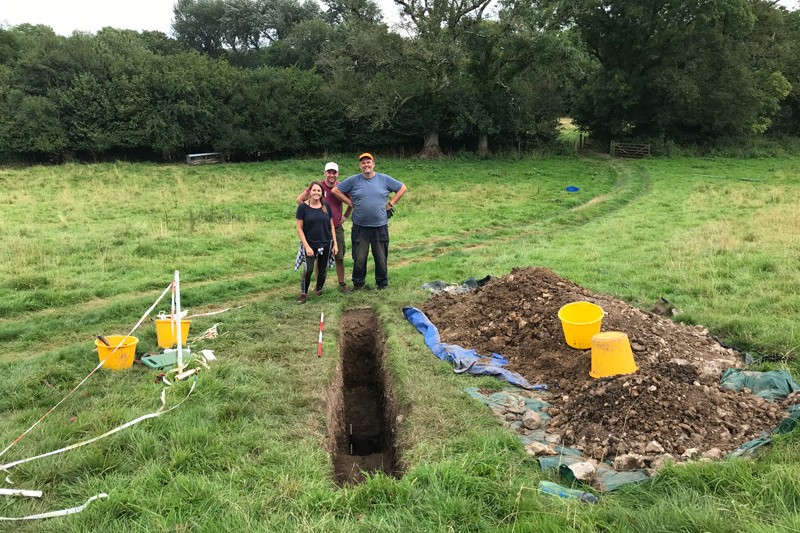Peru's House of Cards: Odebrecht scandal has engulfed the country's political class
Laura Bunt-MacRury, Bournemouth University
Pervasive and endemic corruption is a way of life in Peru – what the late Peruvian scholar Alfonso Quiroz described as an enduring “history of unbound graft”. So the fact that Peru is in eye of the storm of the biggest corruption scandal in modern Latin American history is hardly surprising. But, even in a region prone to theatrical political drama, the scandal has ensnared and toppled those in the highest political offices in Peru.
A Netflix-worthy tale of political intrigue has unfolded: one president Pedro Pablo Kuczynski (2016-18) resigned and is currently under house arrest. His predecessor, Ollanta Humala (2011-16) and his wife Nadine Heredia remain in preventive detention.
Meanwhile, former president Alejandro Toledo (2001-2006) – a Stanford-educated economist and the first elected indigenous president of Latin America – is in California fighting extradition to Peru after an arrest warrant was issued in 2017 on charges of bribery. And, shockingly, on April 17 2019, two-time president Alan García (1985-1990 and 2006-2011) and leader of the oldest political party in Latin America, the American Popular Revolutionary Alliance (APRA), refused to surrender to police and committed suicide.
The downfall of these leaders is symptomatic of the demise of an entire political class. In fact, of all the countries affected by the so-called Odebrecht scandal, Peru is perhaps the only country where the wheels of justice are truly turning – in this case, literally, into indictments of a once untouchable sphere of people. But why is the judicial system working so well in Peru of all places?
An international judicial investigation, known as Operation Car Wash, began in Brazil and involves at least ten other Latin American countries.
The Brazilian construction giant Odebrecht was heavily implicated in bribing a large number of politicians in exchange for lucrative construction contracts over a period of decades. Although some observers believe that international corruption reform measures and outside efforts at judicial reform played the biggest role in exposing this scandal, there are other factors, unique to Peru, that are worth taking a look at.
Dirty money
About 77 Odebrecht executives who accepted plea bargains testified against politicians. Criminal indictments rained down on former presidents Luiz Inácio Lula da Silva and Dilma Rousseff, as well as hundreds of mid-level politicians and businessmen.
One man, Jorge Barata (the Odebrecht executive director in Peru), was allegedly responsible for administering the high-end political bribery scheme. In sync with Brazilian prosecutors, Barata was offered a plea bargain in Peru and he sang like a canary. Indictments and arrests followed at the very highest levels.
Toxic environment
Some legal scholars assert that the Odebrecht scandal is part of the process of growing democratisation in the region, made possible by international initiatives against corruption such as the G20 Anti-Corruption Agenda. This initiative, along with other global reform efforts in the 1990s, it is argued, have strengthened the judiciaries in Latin America.
But I think something more homegrown was at work. When I conducted ethnographic fieldwork in Cuzco concerning the Peruvian legal system one thing became immediately apparent to me: infighting and finger-pointing were rife among judges, lawyers, and public prosecutors. I heard constant allegations and counter-claims of corruption and petty bribes. As one judge put it: “The first thing I do when I open a case file is think: who’s trying to deceive me, who’s been bought off?”
Ironically, this toxic environment had the effect of creating an atmosphere of constant surveillance and scrutiny of a system prone to corruption – most prominently by public prosecutors. In fact, one of least studied aspects of Latin American democracies is the how the rise of the role of public prosecutors in the 20th century has served to defend the letter of the law.
The two public prosecutors originally in charge of the Odebrecht case in Peru, José Pérez and Rafael Vela, proved to be fierce and competent prosecutors. To maintain the political fragility that sustains such a case in Peru both men frequently challenged the chain of command at the Department of Justice and “leaked” information to media outlets to their advantage. When viable, Pérez and Vela exposed not only the dry, quotidian details of the case to the public, but also revealed the toxic infighting, rife corruption and highlighted potential barriers to justice. Their strategy, what Pérez labelled a “hierarchical rebellion”, was preemptive.
The pair were almost ousted by the new attorney general, Pedro Chávarry, in January 2018, on charges of insubordination. Chávarry, conversely, resigned shortly thereafter. In many respects, his resignation marks the triumph of a juridical class over a political class for the first time in modern Peru.
Fighting for justice
But apart from the sensational headlines, there’s a quieter story that helps explain why justice is now being served in Peru. Peru’s legal system has not predominantly been used by elite litigants, but in fact by the lower classes. For example, my research shows that indigenous peasant women in particular made critical inroads into judicial processes in the 20th-century in Cuzco, Peru – especially in cases of rape and domestic violence.
While each era of Peruvian legal history was different, following the Agrarian Reform of 1968 things changed radically. The largest land reform outside of Cuba, this reform redistributed land holdings from plantation-style haciendas into the hands of indigenous peasants. It also prompted a massive change in how people used the judicial system and thought about legal rights.
Although their cases were infrequently successful, people nonetheless started to use the courts in ways unseen before in Peruvian history. While average Peruvians are hardened to their country’s radical social inequities, they still believe in the courts. That is, if Peru has a strong judiciary today, it is only because the peasant class has built it up and maintained it by actually using it. In this way, the tradition that emerged from the mobilisation of peasants in the legal system strengthened from peasant mobilisation of established legal frameworks has strengthened what Peru’s most respected jurist, Luis Pásara, calls the nation’s appetite for bottom up models within judicial processes.
While this is by no means a uniform characterisation of the Peruvian legal system, this sense of fairness and the capacity to call power to account has been a contributory factor in triggering the downfall of this Peruvian House of Cards.![]()
Laura Bunt-MacRury, Senior Lecturer in Political and Legal Anthropology, Bournemouth University
This article is republished from The Conversation under a Creative Commons license. Read the original article.



